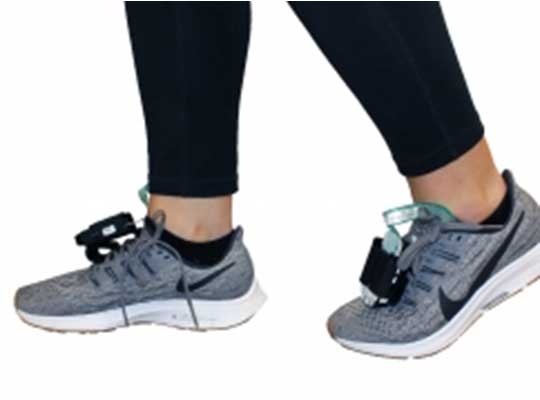BOSTON (October 2, 2020) – Tekscan is pleased to introduce F-Scan64: A new easy-to-use wireless in-shoe pressure mapping system with a quick set-up configuration that offers greater flexibility to collect gait data for clinical research.
In-shoe pressure mapping technologies utilize ultra-thin pressure sensors that are designed to fit within a subject or patient’s shoe to record pressure data while performing dynamic actions. These sensors are connected to data-acquisition electronics that collect pressure data onto a device worn by the subject for analysis after data collection, or transmitted wirelessly to a PC software program. Biomechanics researchers and clinicians use in-shoe pressure data to pinpoint issues in the gait cycle, identify and correct pathomechanical dysfunctions, improve athletic performance, and several other applications.

As the latest addition to Tekscan’s F-Scan family of in-shoe pressure mapping systems, F-Scan64 is designed for clinicians and clinical researchers seeking a simple and fast in-shoe gait analysis solution. Featuring quick-connect, Bluetooth-enabled data acquisition electronics, F-Scan64 allows for natural gait data collection free from cords and restrictions of movement.
F-Scan64 features an ultra-thin (0.3 mm thinness) and flexible pressure-sensing array of 64 sensing points that fits within the patient’s shoe. After a simple set-up and Bluetooth-connection process, pressure feedback from the sensor relays wirelessly to a PC-based software as the patient walks. The software captures pressure, force, and temporal gait data, while also providing users access to the raw data for analysis.
According to Alyssa Rubino, Product Manager for Tekscan’s Medical Division, F-Scan64 is the ideal in-shoe gait analysis system for users that regularly work with patients. “Patients have busy lives. We developed F-Scan64 to help for clinicians and clinical researchers stay efficient when working with patients, without sacrificing the quality or accuracy of their gait data,” says Rubino. “F-Scan64 users can set up and begin collecting in minutes.”

Another timesaving trait of F-Scan64 is the availability of six different sensors pre-sized to fit most adults. This saves the clinician or researcher the extra step of trimming sensors to each patient’s shoe size. “There are advantages to having the ability to trim sensors for certain applications. But when you’re on the clock with a patient, this is a nice feature to have,” says Rubino.
F-Scan64 scans at rates up to 100 Hz, which is sufficient for a variety of gait analysis applications, says Rubino. “F-Scan64 is appropriate for measuring pressure and force during certain dynamic activities like walking, squats, or lunges. But we also support using it for pre- and post-rehabilitative treatment applications, or assisting in orthotic or corrective footwear selection and design,” says Rubino. “The sensors are reusable and will last for multiple trials, depending on the application.”
F-Scan64 also provides users with the ability to export into multiple research-friendly file formats, including ASCII.
“After listening to feedback from clinicians and clinical researchers over the last several years, we strongly feel F-Scan64 addresses many of their demands for a user-friendly, fast, and natural in-shoe gait analysis configuration,” says Rubino.
For more information, please visit: www.tekscan.com/f-scan64.















